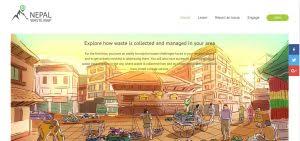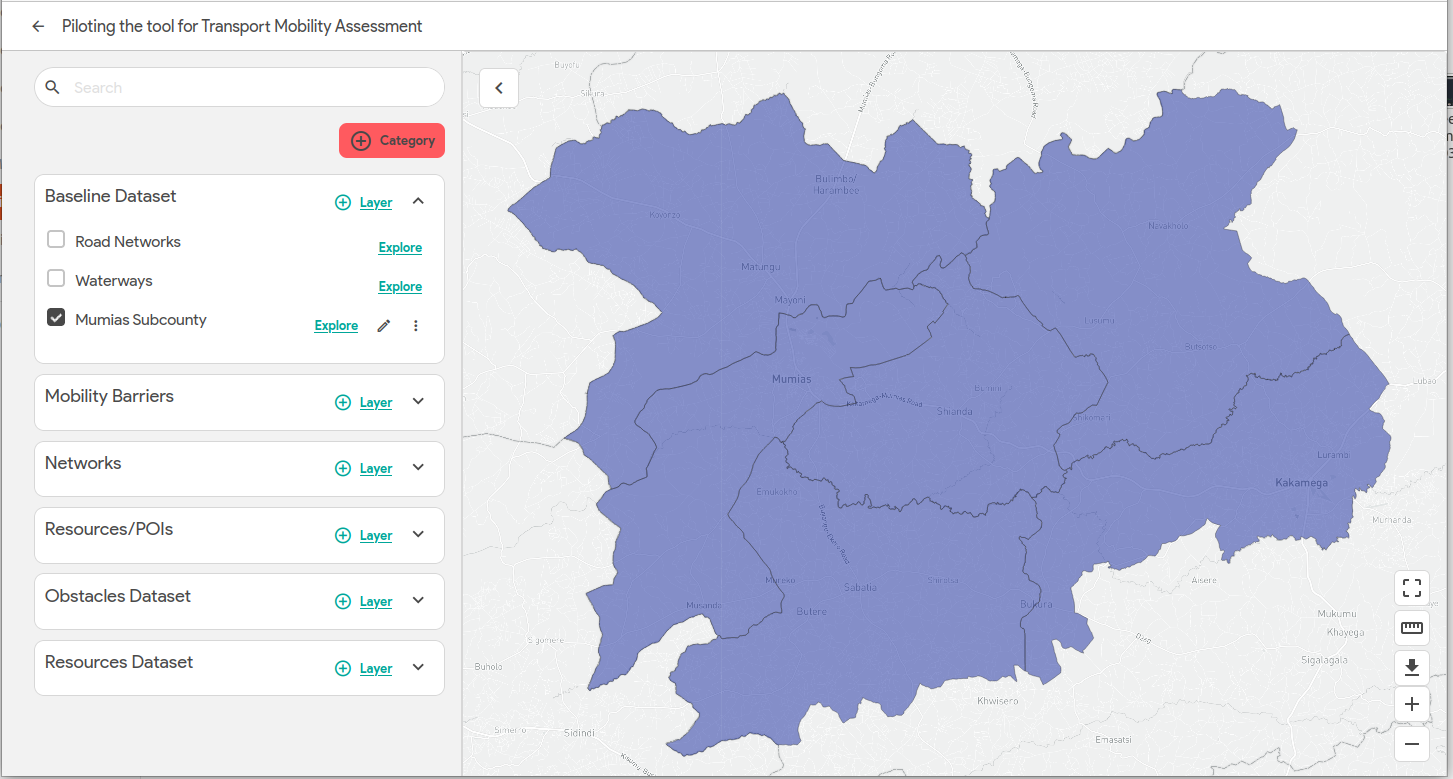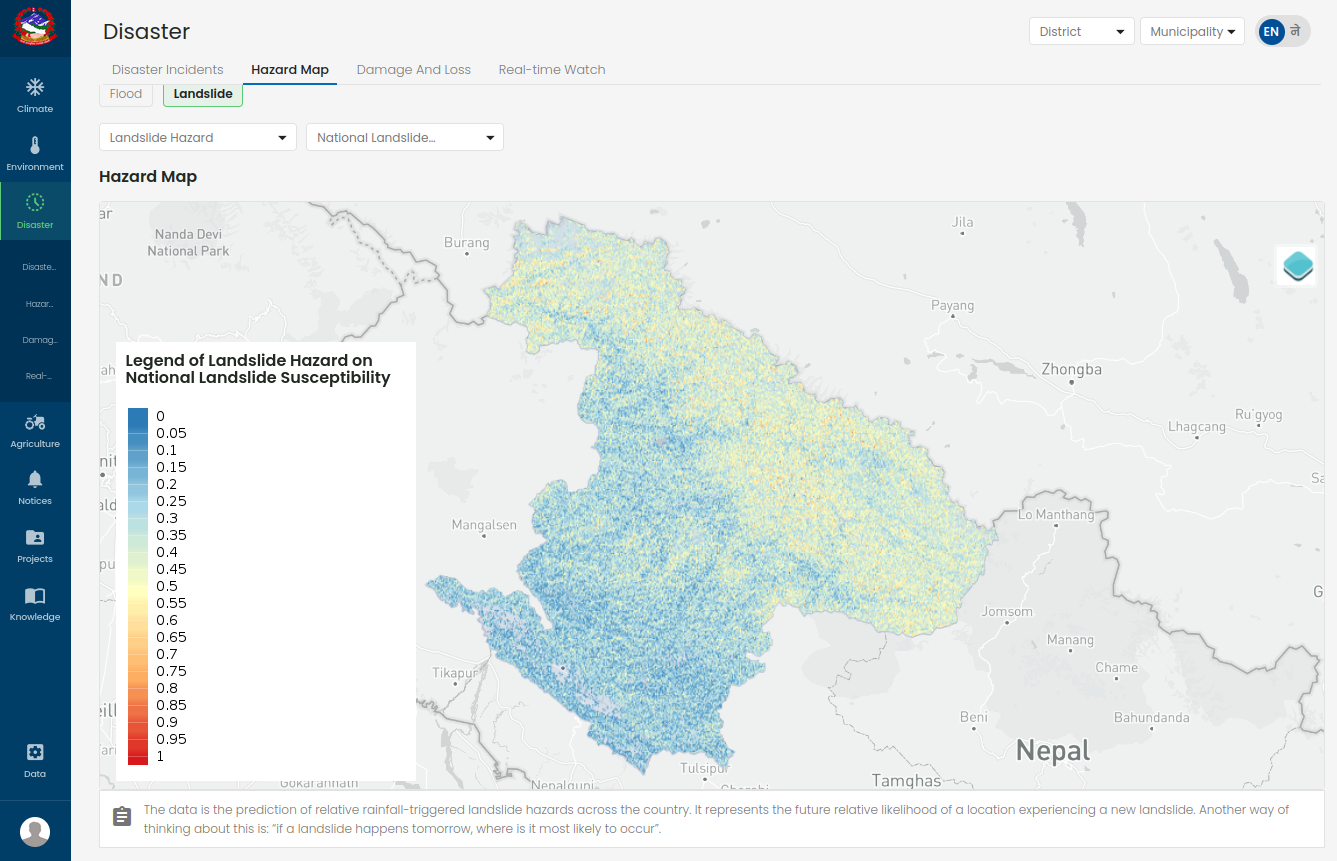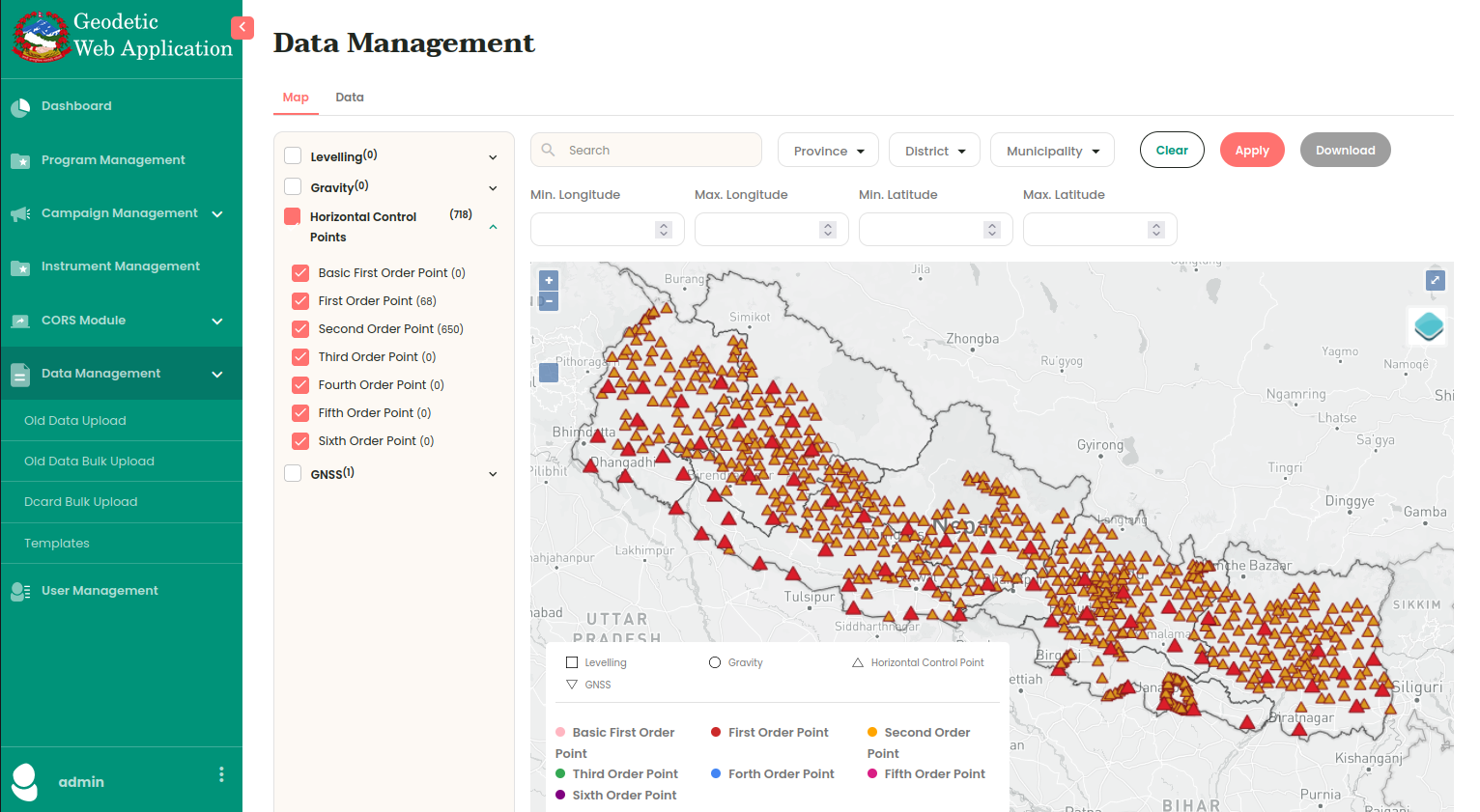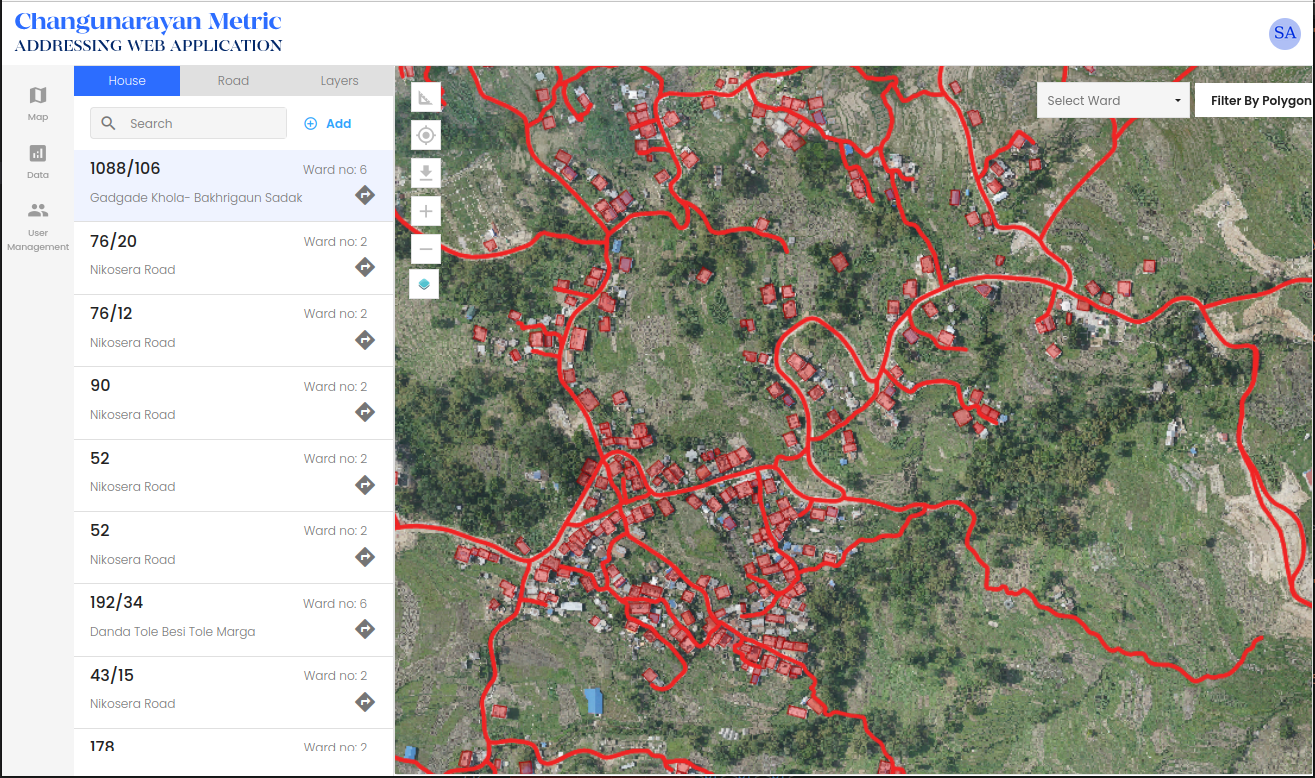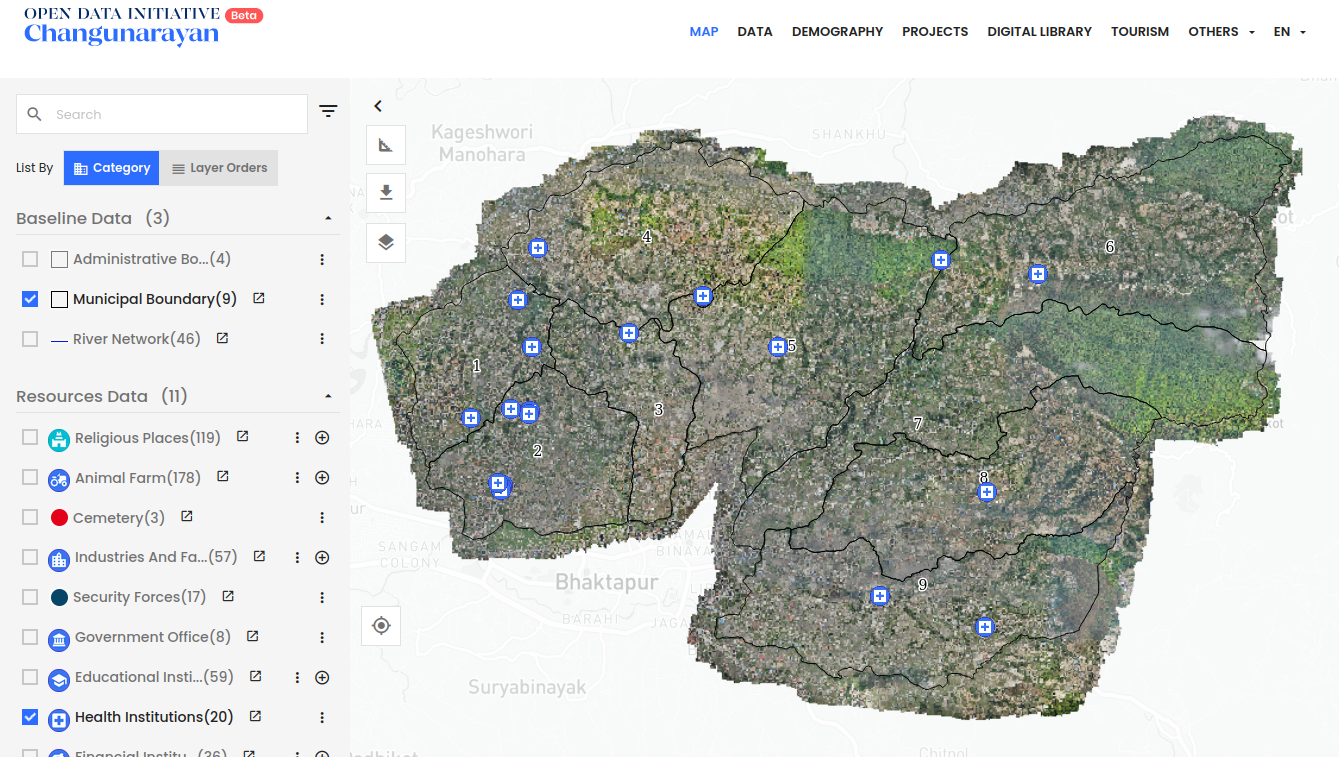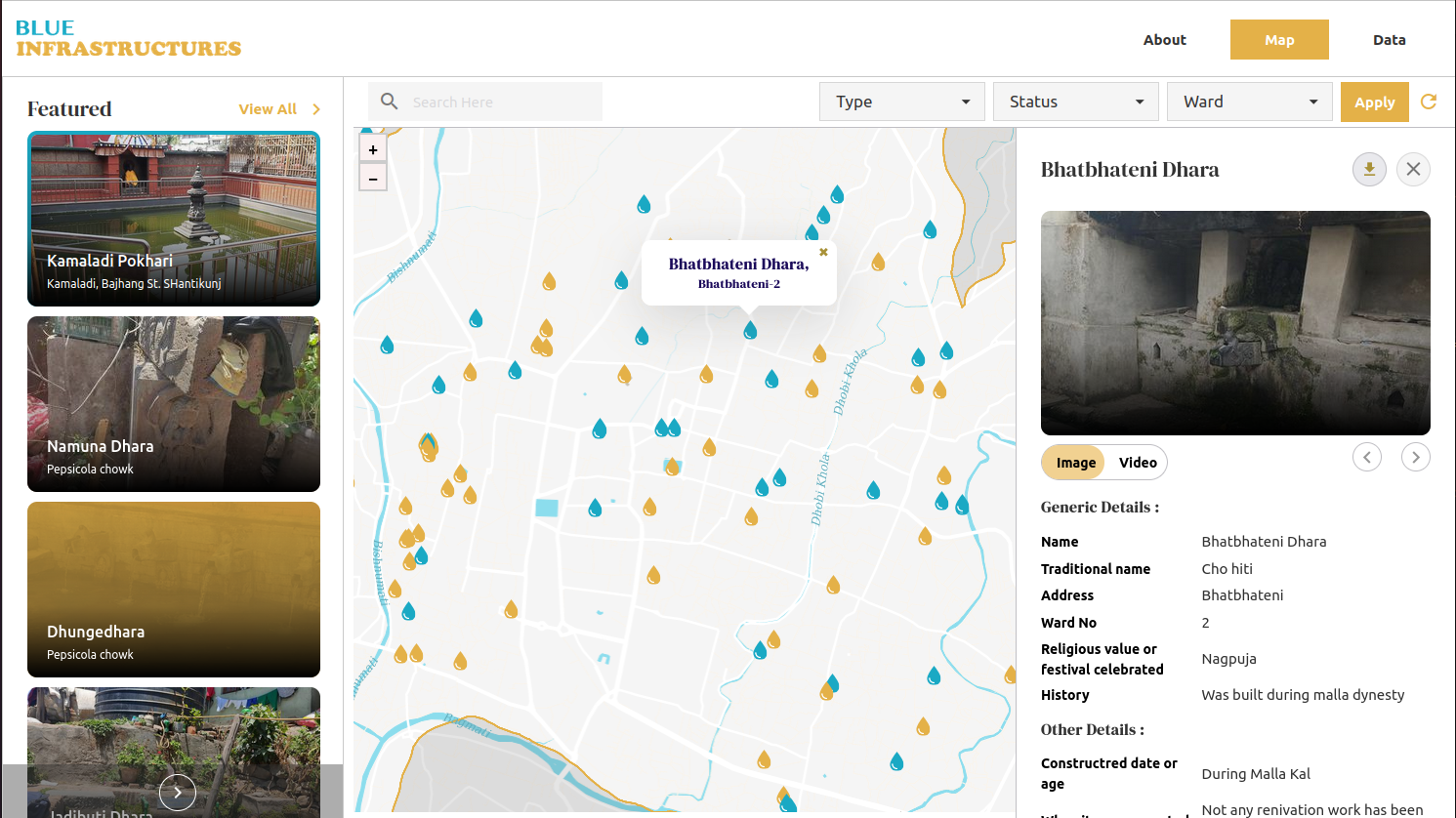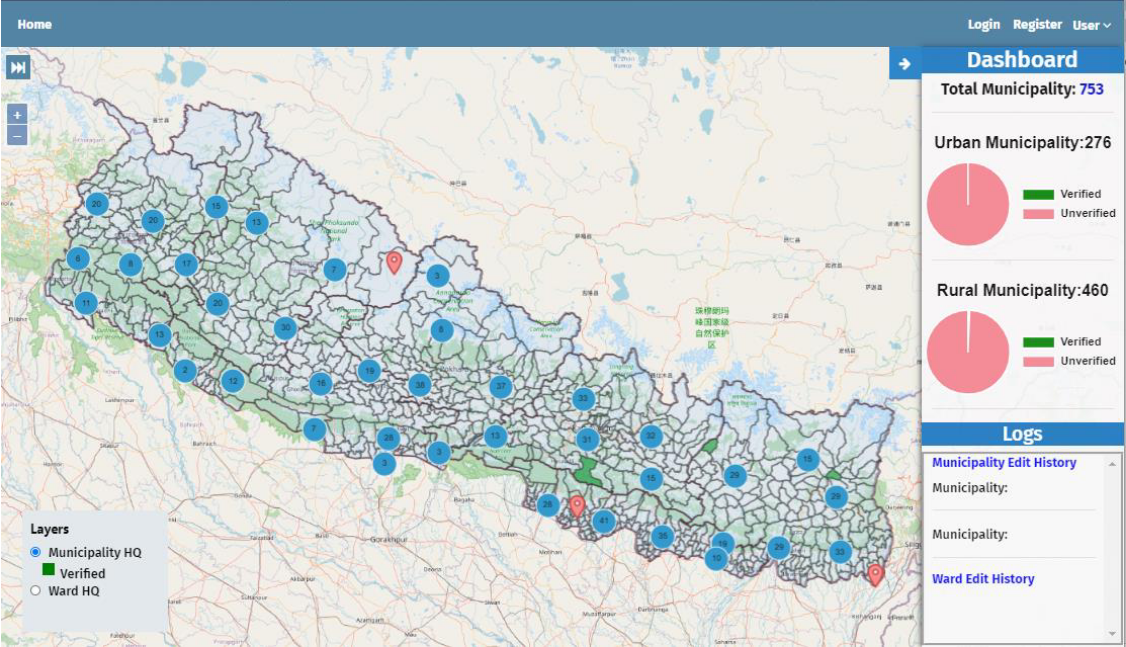ABOUT MYSELF
I am a geomatics engineering graduate from Kathmandu University,Nepal. Presently, I am working as a Research Associate at Geoinformatics Center(GIC), AIT, Thailand. I am currently gathering professional experience in the WebGIS sector. Whilst, I also have sound knowledge in the geoinformatics areas such as; RS, UAV technology, GIS, FOSS, Geospatial Programming, etc. I am enthusiast about the integration of Web GIS technologies along with other geoinformatics tools for the improvement of critical aspects of environment and society. I also actively involved in publishing papers in journals and conference proceedings in the sector of WebGIS and geoinformatics. Despite all, I had very good academic track records and holds numerous academic excellence awards.
EDUCATION
2016-2020
Bachelors of Engineering in Geomatics
Kathmandu University
Dhulikhel,Nepal
Grade: 3.86 CGPA out of 4
Batch Topper
2014-2016
10+2 Science Stream
Siddhartha Higher Secondary Boarding School, Banepa
Kavre, Nepal
Grade:77%
2014
SLC
Lin International Secondary School
Kavre, Nepal
Grade:86.38%
Batch Topper
EXPERIENCE
Nov 2022 - Present
Research Associate
Geoinformatica Center, AIT
Pathumthani, Thailand
Full-time
Dec 2020 - Nov 2022
WebGIS Developer
Naxa Pvt. Ltd.
Kathmandu,Nepal
Full-time
March 2022 - present
GIS Analyst
Airlift Company
Kathmandu,Nepal
Part-time
June 2020 - August 2020
WebGIS Developer Intern
Naxa Pvt. Ltd.
Kathmandu, Nepal
LEADERSHIP AND INVOLVEMENT
- School House Vice-Captain for one year
- Involved as volunteer in 2 day’s leadership program organized by GPYC (Global Peace Youth Corps), Nepal at Banepa
- Worked as Manager in Basketball Team during GE Cup 2018
- 15-hour Arc-GIS Training organized by GES (Geomatics Engineering Society)
SKILLS
- Matlab
- Image Processing Software (Pix4D Mapper)
- GIS Software’s (ArcGIS, QGIS)
- AutoCAD Land Desktop
- Spatial Database Management (PostgreSQL, PostGIS)
- Drone Piloting
- Data Processing (GNSS Solution)
- Microsoft-Word, Microsoft-Excel, Microsoft-PowerPoint, Microsoft-Access
Programming Language
- C and C++
- Java
- Python
PROJECTS
- “3D Model Preparation of Khopasi Intake Site”, 2nd Semester Undergraduate Project,2016
- “Monitoring Growth Pattern through Multi-Temporal UAV Datasets: A Case Study of Potato Plant”, 5th Semester Undergraduate Project,2018
SERVICES
- Volunteered in International Map Year 2015-2016 organized by Geomatics Engineering Society(GES) at Kathmandu University
- Volunteered in WORLD GIS DAY 2017 organized by GES at Kathmandu University
- General Member of Geomatics Engineering Society, Departmental Club of Geomatics Engineering in Kathmandu University
AWARDS
- 100% tuition fee provided by Kathmandu University for being a class topper
- Scholarship for Undergraduate course (33% of total fee) supported by Government of Nepal through Land Management Training Center (LMTC)
- SLC Batch 2070 Topper in Lin International Academy
PUBLICATIONS IN JOURNALS
ABSTRACT
Free and Open-Source Software (FOSS) is making revolutionary in the present era of Information, communication and
technology. Considering the availability of open source software, this study primarily aims to apply CA-ANN model
available in MOLUSCE plugin of QGIS to predict the future scenario of LULC. Similarly, it also examines the
responsible driving factors for the LULC changes throughout the study period (1992-2020) using desk study. In order
to accomplish the objective of this study initially necessary datasets were extracted, then drives were selected for impact
analysis, finally modelling and prediction was done. The future scenario of Banepa and Dhulikhel municipalities was
generated using CA-ANN model via MOLUSCE plugin bbgavailable in QGIS. It reveals that agriculture and forest
land are expected to decrease by 2.56 % and 2.62 % respectively by 2032 since 2020.Similarly, the barren land is
predicted to decrease by 0.57 % whereas the builtup expected to increase by 5.73 % in 2032 since 2020.Moreover,
results generated from this study reveals that agriculture and forest land are expected to decrease by 2.56 % and 2.62
% respectively in 2032 from 2020.Similarly, the barren land is predicted to decreas by 0.57 % whereas the builtup will
be increased by 5.73 % in 2032 from 2020. Future prediction of LULC classes is crucial in Land Use Planning of every
government/state. The prediction done by model is corrected up to 81.66%. In addition, this study reveals that during
study period major drivers such as; internal migration, commercialization, real estate business are major drivers for
LULC changes whereas establishment of Kathmandu university and dhulikhel hospital, climatic conditions, population
growth, accessibility of Araniko and BP highways are the major drivers of LULC changes in Dhulikhel municipality.
Thus, the methodology adopted and results generated from this study can be the basis or reference materials for the
technical members of the council of the respective municipal offices; Banepa and Dhulikhel to develop their land use
planning/land management related project.
Keywords: LULC, CA-ANN, MOLUSCE, QGIS
ABSTRACT
Nepal is considered one of the rapidly urbanizing countries in south Asia. Most of the urbanization is dominated in large and medium cities i.e., metropolitan, sub-metropolitan, and municipalities. Remote Sensing and Geographic Information System (GIS) technologies in the sector of urban land governance are growing day by day due to their capability of mapping, analyzing, detecting changes, etc. The main aim of this paper is to analyze the urban growth pattern in Banepa Municipality during three decades (1992-2020) using freely available Landsat imageries and explore driving factors for change in the urban landscape using the AHP model. The Banepa municipality is taken as a study area as it is one of the growing urban municipalities in the context of Nepal. The supervised image classification was applied to classify the acquired satellite image data. The generated results from this study illustrate that urbanization is gradually increasing from 1992 to 2012 while, majority of the urban expansion happened during 2012-2020, and it is still growing rapidly along the major roads in a concentric pattern. This study also demonstrates the responsible driving factors for continuous urban growth during the study period. Analytical Hierarchy Process (AHP) was adopted to analyze the impact of drivers which reveals that, Internal migration (57%) is major drivers for change in urban dynamics whereas, commercialization (25%), population density (16%), and real estate business (5%) are other respective drivers for alteration of urban land inside the municipality. To prevent rapid urbanization in this municipality, the concerned authorities must take initiative for proper land use planning and its implementation on time. Recently, Nepal Government has endorsed Land Use Act 2019 for preventing the conversion of agricultural land into haphazard urban growth.
Keywords: Urban Growth, Driving factors, Analytical Hierarchy Process (AHP)
ABSTRACT
This study illustrates the land cover/ land use (LULC) (Agriculture, Forest, Built-up, Barren) and its changes
using geo-spatial technology like Remote Sensing and GIS. The land cover has been detected for the years 1992,
2002, 2012, and 2020 using freely available Landsat Images. In addition, land cover change analysis within a
decade and also overall from 1992 to 2020 has been carried out. The approaches like Maximum Likelihood
Classification (MLC) have been applied in ENVI for supervised classification. Observing the statistics generated
from this study, over the time frame of 38 years (1992-2020), forest and agricultural land were decreased by
8.27 sq. km (7.57%) and 8.12 sq. km (7.44 %) respectively, whereas built-up and barren areas were increased
by 12.39 sq. km (11.3 6%) and 3.99 sq. km (3.66 %) respectively. To prevent the haphazard conversion of
agricultural land in other land use, the implementation of the land use policy 2015, which has recently been
enacted in Nepal, is important.
Keywords: Land Use, Land Cover, GIS, Remote Sensing, Agriculture
PUBLICATIONS IN ACADEMIA
Geopy is a python module that includes geocoders class for calling several geocoding web services such as: Open StreetMap Nominatim, ESRI ArcGIS. Google Geocoding API(V3), Bing Maps API, Yandex, OpenMapQuest, NaviData, GeoNames etc which Makes easy to locate Co-ordinate, Address, Geographic location(Mountains, rivers etc), Landmarks, Cities, Countries across the globe.
Since Nepal is an agricultural country, common people of the country have excessive reliance on land. It is the crucial and vital factor of production in country like Nepal which indicates the socio economic and socio political status of the society. There are numbers of acts, regulations, directives and other decrees with adequate legal and regulatory framework for the smooth land governance and equitable land access among the people. This paper aims on exploring existing land law and policy in Nepal. Nepal Law commission reviews prevailing laws and recommends reform where necessary. There has been weak implementation due to elite nexus, lack of knowledge of policies and laws and centralized land administration system. The legislative body in the parliament, law commission of Nepal and are responsible for endorsement of bill and drafting the acts respectively. The Ministry of Land Management, Co-operatives and Poverty Alleviation and line agency under it are responsible for evaluation and implementation of the land related acts. The land measurement act, land revenue act, land related act, land acquisition act are the governing acts regarding land governance in Nepal. These acts have modernized, managed, the systematic land governance in the country. The planned national policy has limited access to landless and the destitute groups, unable to update information related to land and other geographical information, not to be fully utilized the contemporary technology in the field of land administration. Thus, if these laws are implemented well and unified, the land governance in Nepal can be ascertained.
Online mapping is the compilation and publication of Web sites that provide exhaustive graphical and text information in the form of maps and databases. The first well known online mapping service is MapQuest which was launched in 1996 and is still popular. In addition to interactive maps with zooming function, some services offer topographical maps, satellite images, weather and climate maps, demographic maps and traffic information. Geospatial data visualization refers to a set of tools and techniques supporting the analysis of geospatial data through the use of interactive visualization
Ethiopia is an agrarian country where land has been the major means of production and livelihood. Tenure rules help to define how property rights to land are allocated within societies. Our paper aims on discovering the issues of land tenure system in Ethiopia along with its challenges and opportunities. Ethiopia has complex land tenure system. Land had been controlled by elite king until Derg Regime came in power in 1975 with slogan "Land to the Tiller" but ended up owning the land itself rather giving it to the people. The existing government that controlled power in 1991 maintained the Derg's state ownership and new constitution 1995 approved the state ownership of land in Ethiopia. Farmers have only usufruct right to land which raise issue on food sovereignty. Food insecurity has a disproportionate impact's on Ethiopia's economy. There have been lots of people and dozens of parties arguing for private landowner ship, the debate on this issue continues till this day, as ratification of 1995 constitution could not conclude the controversial and throny issue. As a result, farmers who are interested in agriculture sometimes face credit constraint as banks find it more risky to lend to such business, which affects the level of production since agaric inputs are expensive Thus, a policy has to be drawn to facilitate more efficient transactions of land between farmers and to minimize inefficiencies associated with these tenure systems.
Project Control is key to success. Nowadays projects dynamicity and complexity make the control process highly critical. Project operates under some constrains such as time, cost and quality. During Project Control, project managers need to adjust schedules or do what is needed to keep the project on track. Effective project controls process begins early in the project with planning and ends late with post-implementation review. This paper deals with importance of project control and major issues, challenges and opportunity regarding project control. Ultimately, project controls are iterative processes for measuring project status, forecasting likely outcomes based on proposed goals, and then improving project performance if projected outcomes are unacceptable. Every project goes through certain degree of turbulence and therefore required monitoring and controlling to controls the activities within the project and applies necessary correction in case of deviations found in performance. In this article, importance, purpose, types, process, approaches and benefits of project control are examined. Project control is considered very important as it determine the success of the project and also determine whether the inputs in project are properly utilized. It also helps to provide accurate and timely information to project management team to make informed decision. Thus, Project control is a professional function which is essential for achieving perfect project outcome by controlling the time, resources and performance to get unique product, service or information.
The Kathmandu District incorporates a number of built up area that are post-2000 features detected with application of modern tools. These built up areas are actually the altered forms of either wet lands or previously vegetated areas. This alteration is directly effective upon the ecological aspects of an urban area which puts questions upon the environmental quality of the Kathmandu district and in turn effective upon the health of the city dwellers. This type of work seems to be useful for the urban planners and the dwellers for future decision on monitoring of the extension of built up areas. urban planners and the dwellers for future decision on monitoring of the extension of built up areas
Climate change has become a world long term challenges. It has severe impacts on the ecosystem, ecology, and all humankind development. This essay deals with monitoring the challenges that are encountered due to climate change using space-based technology and policy as a tool and thus concluding ways to mitigate them from local communities. Thus, investing and spending on space technology is worthwhile because the capability to collect data at global, regional, and local scales rapidly and repetitively efficiently and more cheaply. Nowadays, Climate change has become a world long term challenge since temperatures have been increasing day by day around the world over many decades. Catastrophic storms, greater floods, extreme sea level rises, increasing temperature, shift in rainfall patterns, droughts, and wildfires are happening much faster than many of us thought possible. If the same rates continue in up-coming years, we are going to witness some next-level natural disasters. Climate change has severe impacts on the ecosystem, ecology, and all humankind development. Due to this, a variety of species and plants are vanishing day by day. Food security, shelter, and the health of many countries has been already impacted. It is now clear that urgent action against climate change is crucial and it's time to step up towards the mitigation of climate challenges for which relevant information is essential in real-time.

